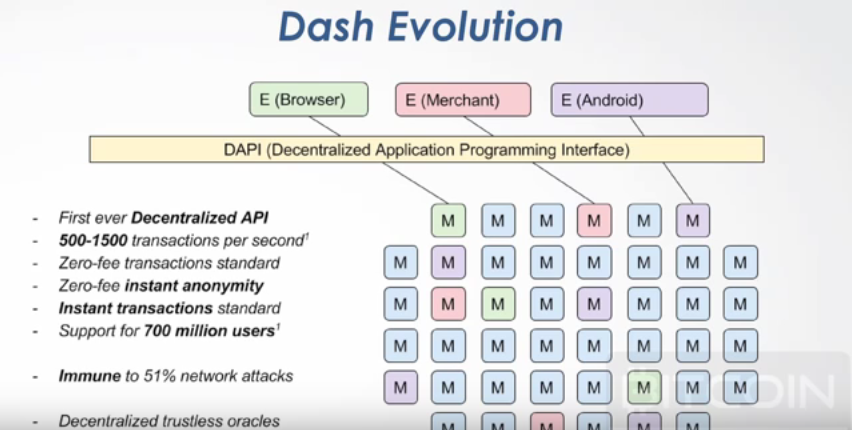Lead Dash developer Evan Duffield recently gave a presentation for Bitcoin Wednesday. After an introduction to Dash's core protocol functions, Duffield went on to give a pre-announcement of a series of upgrades called “Evolution.” The first part of Evolution is what Duffield calls the world's first decentralized Application Programming Interface (API), or DAPI.
Duffield explains that the DAPI will enable other people or programs to query Dash's blockchain data as though they had access to a full node themselves – without having to actually run one. The data returned by the DAPI will be pulled from a randomly selected quorum of Dash's masternodes.
“Developers don't need to download, validate, or store the 10GB blockchain, yet they still have the same security as a full node and much better privacy.”
- Evan Duffield
Cointelegraph caught up with Duffield to ask him to expound on the ideas behind the world's first DAPI.
Cointelegraph: For those unfamiliar with exactly how an API works – much less how it could be called "centralized" – please explain what an API does.
Evan Duffield: APIs, or Application Programming Interfaces, are how useful libraries and services are made accessible to outside programs and companies. For example, a company like PayPal has an API, which will allow you to send funds to anyone else in the world and automate payments using the API.
However, this is obviously centralized by design. All requests to their API will be through a centralized service. With [Dash] Evolution, we've designed a new type of API where the process of using it is completely decentralized and still highly secure.

CT: What functions would Dash's decentralized API – DAPI – be useful for?
ED: Having an API allows software developers to interact with the Dash network with much greater ease. The overhead of reaching out to the network to do an operation requires minimal bandwidth and time. Developers don't need to download, validate, or store the 10GB blockchain, yet they still have the same security as a full node and much better privacy.
CT: How is the randomly selected quorum's data compatible with a competitive Proof-of-Work system?
ED: Quorums on the network have the ability to overrule the mining network about specific transactions. Basically, they can flag a transaction as guaranteed to make it into the blockchain. If someone mines a conflicting transaction, their block will be rejected. All clients on the network automatically reject conflicting blocks and will create blocks with masternode-network compatible transactions.
“[T]he role of a Virtual Corporation [is] to operate as closely as possible to a normal centralized corporation, without any of the centralized components.”

CT: You've called Dash the first Virtual Corporation. Is a virtual corporation different in nature from the more commonly-used term DAC (Decentralized autonomous company/corporation)?
ED: I make a distinction between a Virtual Corporation and a DAC. I would say that the Dash Virtual Corporation is a DAC, but it is also a Virtual Corporation. I would consider the role of a Virtual Corporation to operate as closely as possible to a normal centralized corporation, without any of the centralized components.
This means we have a software development team on staff, a marketing team, and project managers – just like a normal tech company. However, our funding is 100% decentralized and we use the network for our decision-making process.
CT: What else aside from the DAPI can we expect to see over the next few months of the Dash 'Evolution' rollout?
ED: We're going to be revealing some more information about Evolution in a conference in Mexico on December 4. After that, the next information about Evolution is due to come out in Bitcoin Miami on January 26.
Duffield's full Dash and DAPI presentation to Bitcoin Wednesday:
